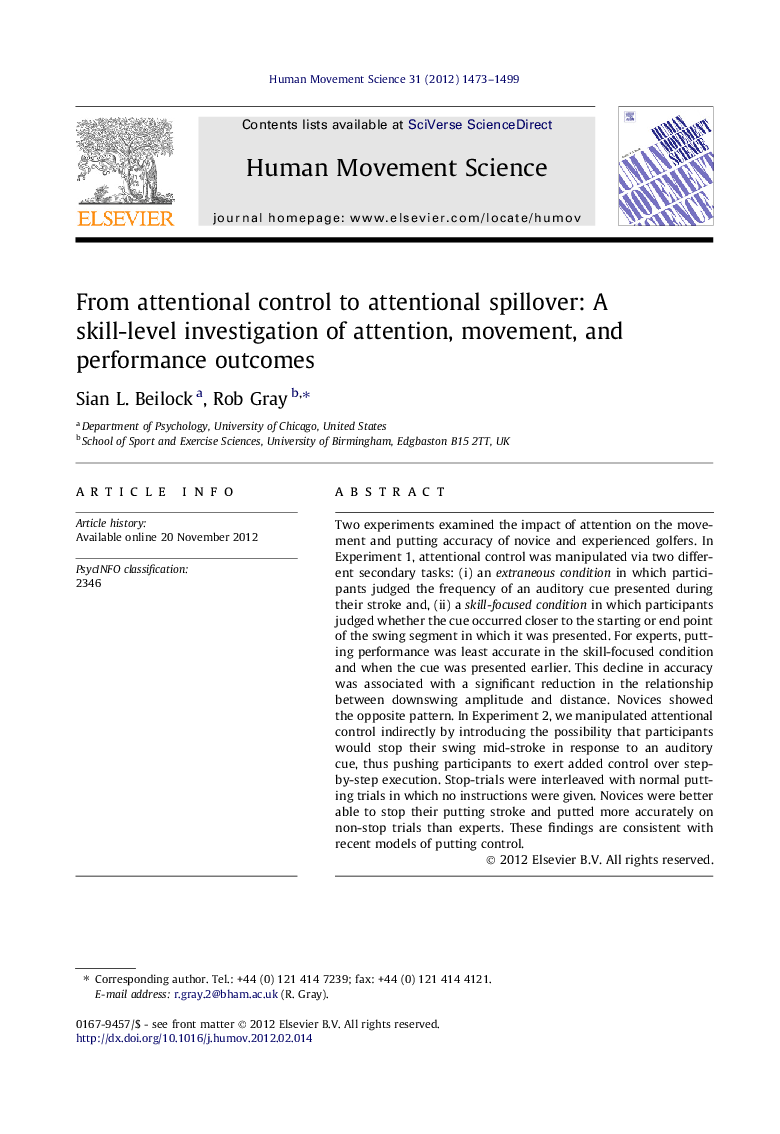| Article ID | Journal | Published Year | Pages | File Type |
|---|---|---|---|---|
| 928511 | Human Movement Science | 2012 | 27 Pages |
Two experiments examined the impact of attention on the movement and putting accuracy of novice and experienced golfers. In Experiment 1, attentional control was manipulated via two different secondary tasks: (i) an extraneous condition in which participants judged the frequency of an auditory cue presented during their stroke and, (ii) a skill-focused condition in which participants judged whether the cue occurred closer to the starting or end point of the swing segment in which it was presented. For experts, putting performance was least accurate in the skill-focused condition and when the cue was presented earlier. This decline in accuracy was associated with a significant reduction in the relationship between downswing amplitude and distance. Novices showed the opposite pattern. In Experiment 2, we manipulated attentional control indirectly by introducing the possibility that participants would stop their swing mid-stroke in response to an auditory cue, thus pushing participants to exert added control over step-by-step execution. Stop-trials were interleaved with normal putting trials in which no instructions were given. Novices were better able to stop their putting stroke and putted more accurately on non-stop trials than experts. These findings are consistent with recent models of putting control.
► We examine the impact of attention on the movement patterns and putting accuracy of novice and experienced golfers. ► Expert putting is least accurate when required to make a skill-focused judgment early in the stroke. ► When required to stop the putting stroke on some trials performance declines on interleaved non-stopping trials. ► These attention/performance relationships are mediated by changes in movement.
